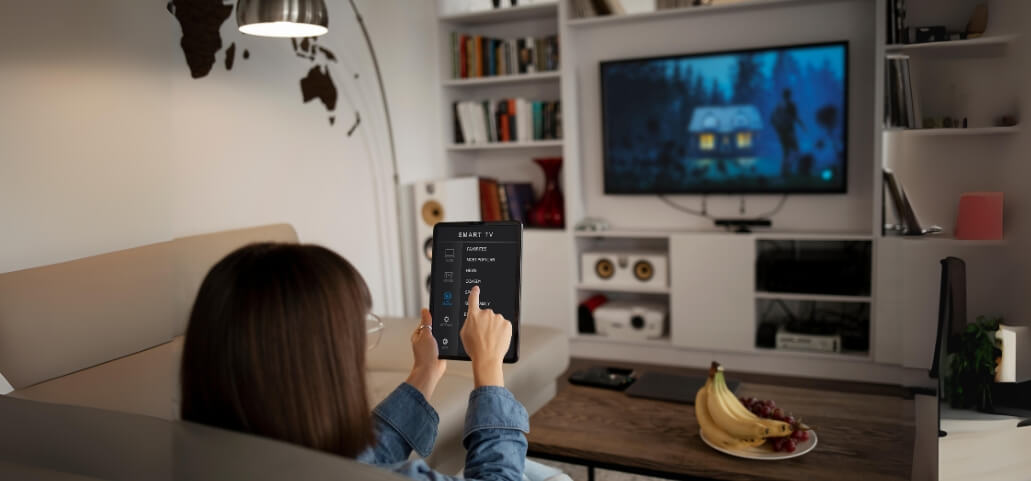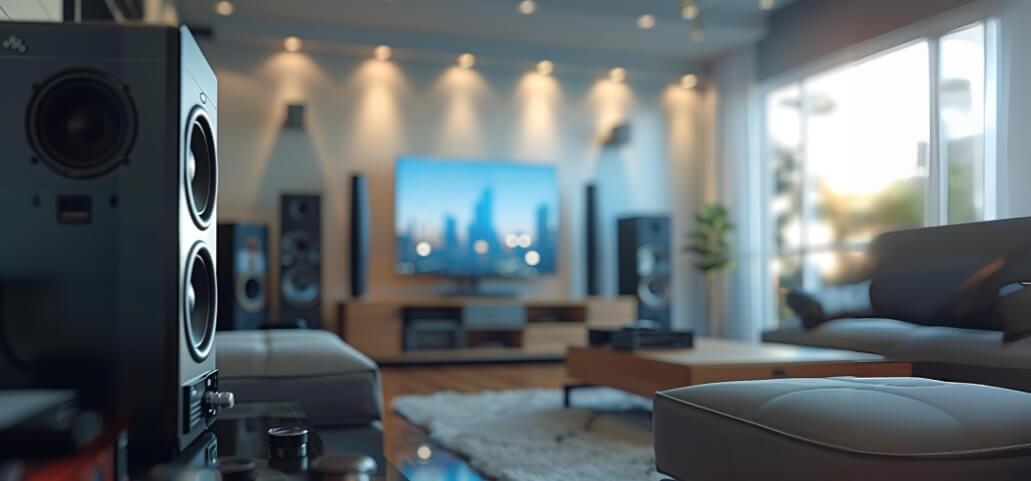Knowing how to connect home theater speakers to tv can transform your viewing experience with immersive sound. Whether you have a basic soundbar or a full surround sound system, it is essential for optimal audio performance. In this guide, we’ll walk you through various connection methods, from HDMI and optical cables to wireless options, ensuring you enjoy top-notch sound quality with your home theater setup. So let’s dive in and explore how to connect home theater speakers to tv.
Understanding Speaker and TV Compatibility
Before you start connecting cables, it’s crucial to understand the compatibility between your speakers and TV. Different TVs and speakers may have varying input and output options, and knowing these can save you a lot of time and frustration.
Types of Connections:
- HDMI ARC (Audio Return Channel): This modern connection type allows for two-way audio transmission, meaning you can control your TV and audio system with a single remote.
- Optical Audio Connection: A reliable and high-quality option, optical audio cables use light to transmit sound and are less susceptible to interference.
- RCA Cables: These traditional cables are still widely used and are generally color-coded for easier identification.
- Auxiliary (AUX) Input: Often found on soundbars and some older speaker systems, this is a straightforward, albeit lower quality, method.
Compatibility Check:
- Check Ports: Ensure that both your TV and speakers have compatible ports.
- Read Manuals: Always consult the user manuals for both devices to understand specific requirements and recommendations.
Connecting Speakers to TV Wirelessly and with Wires

Let’s divide the procedure into two primary groups: wireless and wired connections.
Wired connections typically involve the use of physical cables, such as Ethernet cords, to connect devices directly to a network. These connections have a reputation for being dependable and having steady speeds.
Conversely, radio waves are used in wireless communications to link devices to the network. This category includes Wi-Fi and Bluetooth technologies, offering the convenience of mobility and ease of access without the need for physical cables.
Wired Connections:
Wired connections are the most common and reliable method for connecting home theater speakers to your TV. To establish a wired connection, take these actions:
Using HDMI ARC:
- Locate the HDMI ARC Port: The connector on your TV and home theater receiver is usually identified as “HDMI ARC”. It is a feature of the HDMI standard that enables audio transmission from the TV to the device.
- Connect the HDMI Cable: The HDMI ARC connector on your TV and the suitable port on your receiver should be connected to the opposite end of the HDMI cable.Verify that the cords on both devices are securely fastened.
- Enable HDMI ARC: Open the settings menu on your TV, select the audio settings, and turn on HDMI ARC. This setting might be found under the audio output options or under a specific HDMI control menu. This will ensure the TV sends audio signals through the HDMI cable to your receiver.
Using Optical Cable (TOSLINK):
- Locate the Optical Audio Port: This port is usually labeled as “Optical Audio” or “TOSLINK” and is identifiable by its distinctive square shape. It may also have a small cover that needs to be removed before inserting the cable.
- Connect the Cable: The optical cable should be inserted with one end into the optical audio port on the TV and the other end into the optical input on the receiver. Ensure that the cable clicks into place for a secure connection.
- Configure Audio Settings: On your TV, go to the audio settings menu and select optical audio output or digital audio output. You can be sure that the audio will travel through the optical cable to the receiver if you do this. You may also need to configure the receiver to accept the optical input.
Using RCA Cables:
- Identify RCA Ports: These ports are color-coded—red and white for audio. Generally, the left audio channel is represented by white, and the right by red. On your TV and home entertainment receiver, look for these ports that are color-coded.
- Connect RCA Cables: Match the red and white connectors on the RCA cables to the corresponding colored ports on both your TV and receiver. Plug the red connector into the red port and the white connector into the white port.
- Select Input Source: Use the home theater receiver’s remote to select the RCA input source. This might be labeled as “AUX,” “TV,” or “RCA” on the receiver. Ensure the correct input source is selected to enable audio playback through your home theater system.
Using Aux or 3.5mm Jack:
- Locate the Audio Input Port: This port is usually labeled as “AUX” or “Line In” and is a small, circular port that fits a standard 3.5mm audio jack. It is frequently located on the rear or side of your speaker system and TV.
- Connect the Cable: Place one end of the 3.5mm cable into your TV’s audio input port and the other end into the speaker system’s matching port. Ensure both ends are securely connected.
- Select Input Source: Use your speaker system’s remote to select the AUX input. This may be labeled as “AUX,” “Audio In,” or “Line In.” Ensure the correct input is selected to enable audio playback through your speaker system.
Wireless Connections:
Wireless connections are a convenient option when setting up your home theater system. They could not, however, offer the same degree of dependability and audio quality as wired connections. Here’s how you can set up wireless connections for your TV and speakers:
Bluetooth:
- Enable Bluetooth: Turn on Bluetooth on both your TV and home theater receiver. To guarantee a strong connection, make sure both devices are in pairing mode and close to one other.
- Pair Devices: Follow the on-screen instructions to pair the two devices. This usually involves selecting the name of the receiver from the list of available Bluetooth devices on your TV.
- Select Audio Output: Change the TV’s audio settings to use Bluetooth as the output. Make sure to choose your associated Bluetooth device as the primary audio output source when you navigate to the TV’s audio settings menu.
Wi-Fi:
- Ensure Wi-Fi Compatibility: Both your TV and speakers must support Wi-Fi connectivity. Check the user manuals or product specifications to confirm that Wi-Fi is supported.
- Use a Streaming Device: Devices like Chromecast, Apple TV, or Roku can facilitate this connection. By serving as go-betweens, these gadgets enable wireless communication between your TV and speakers.
- Follow Setup Instructions: Use the streaming device’s app to complete the setup. Download the corresponding app (e.g., Google Home for Chromecast, Apple Home for Apple TV) and follow the step-by-step instructions provided within the app to connect your TV and speakers via Wi-Fi. For flawless performance, make sure every device is linked to the same Wi-Fi network.
Best Practices for Optimal Sound Quality

Achieving the best possible sound quality involves more than just connecting cables. Here are some pointers to make the most out of your home theater setup:
Speaker Placement:
- Front Speakers: Position these at ear level and equidistant from the center.
- Surround Speakers: Place these slightly behind the listening area at ear level.
- Subwoofer: Position it near the front speakers but avoid corners to reduce boomy bass.
Calibration:
- Use a Calibration Mic: Many modern receivers come with a calibration microphone to automatically adjust sound levels.
- Manual Calibration: If a mic isn’t available, manually adjust the levels using the receiver’s settings menu.
Acoustic Treatments:
- Furniture Arrangement: Soft furnishings like curtains and rugs can help absorb sound, reducing echoes.
- Acoustic Panels: Installing acoustic panels on the walls can give the system a more polished look.
How to Connect Home Theater Speakers to TV Without Receiver
While a receiver is often necessary for complex setups, some modern soundbars and wireless systems can connect directly to your TV without needing one. Here are the steps:
- Using HDMI ARC/eARC: Connect your soundbar directly to the TV using an HDMI ARC/eARC cable for a high-quality audio experience. Make sure both your TV and soundbar support ARC/eARC functionality, and enable it in your TV’s settings menu.
- Using Optical Cable: Connect the soundbar to the TV’s optical port using an optical cable. This method provides a reliable digital audio connection and is especially useful if your devices do not support HDMI ARC/eARC. Ensure the optical cable is securely plugged in and select the appropriate input on your soundbar.
- Using Bluetooth: Pair your Bluetooth-enabled soundbar with your TV for a wireless connection. This is a convenient option, eliminating the need for cables. Go to your TV’s Bluetooth settings, search for available devices, and select your soundbar to complete the pairing process.
Troubleshooting Common Issues
Even with the best preparation, issues can arise. Below is a list of these common problems along with solutions:
No Sound:
- Check Connections: Ensure all cables are securely connected.
- Correct Input Source: Make sure the TV and receiver are set to the correct input source.
- Volume Levels: Check that the volume is not muted or set too low.
Audio Lag:
- Enable Lip Sync: Many receivers have a “Lip Sync” feature to correct audio delays.
- Update Firmware: Ensure all devices have the latest firmware updates.
Poor Sound Quality:
- Check Cable Quality: Poor-quality cables can affect sound. Consider upgrading to higher-quality options.
- Recalibrate: Run the calibration process again to ensure optimal settings.
Conclusion
Although setting up a home entertainment system can seem like a daunting chore, it can also be a gratifying experience if you know what to do and follow the appropriate steps. Always put safety first by unplugging any electronics before attaching or removing cords. Additionally, always refer to the user manuals for specific instructions on setting up your particular devices. With these tips and best practices, you can enjoy a high-quality audio experience in the comfort of your home.
Frequently Asked Questions
Q1. How to connect home theater speakers to tv without HDMI?
Answer: You can connect using optical cable, RCA cables, or aux/3.5mm jack depending on the available ports on your TV and speakers.
Q2. What is the best cable for connecting home theater speakers to a TV?
Answer: HDMI ARC is generally considered the best option due to its high-quality audio transmission and ease of use.
Q3. How do I know if my TV supports HDMI ARC?
Answer: Check the HDMI ports on your TV. Should a device bear the designation “HDMI ARC,” it indicates that your television is compatible with its functionality.
Q4. Why is there a delay between the video and audio?
Answer: This is often caused by audio processing delays. Enabling the “Lip Sync” feature on your receiver can help correct this issue.
Q5. Do I need an AV receiver for my home theater setup?
Answer: An AV receiver can greatly improve your audio experience by offering greater sound quality and additional setup possibilities, even though it’s not technically necessary.
Disclaimer: This guide’s content is intended solely for general informative purposes. While we strive to provide accurate and up-to-date information, we make no warranties of any kind about the completeness, accuracy, reliability, suitability, or availability of the information contained in this guide.
Personal Experience: When I first set up my home theater system, I was overwhelmed by the myriad of connection options and settings. However, after some research and trial and error, I found that using an HDMI ARC connection provided the best sound quality with the least hassle. Calibrating the system with a microphone also made a noticeable difference in the audio experience. Trust me, investing time in understanding and optimizing your setup pays off immensely in the long run.
Why Trust Our Content?
Our content is carefully researched and written by tech enthusiasts and professionals who have hands-on experience with home theater systems. Our goal is to give you trustworthy, useful recommendations so you may improve your at-home entertainment experience and make wise selections.

